
Finance Minister Shaukat Tarin has called the power sector a “big black hole” where generation capacity has been overbuilt, which places burden of capacity payments.
“Current power generation capacity is so high that it will take up to seven years to take consumption to that level,” the minister said while releasing the Pakistan Economic Survey 2020-21 on Thursday.
“Power sector is a big challenge for the government, we want to tackle it,” he said.
Tarin pointed out that there was pressure from the International Monetary Fund (IMF) to increase power tariff, but the prime minister refused to revise the tariff rates.
“We want to avoid tariff increase and eliminate circular debt through innovative means,” he said.
Turning to circular debt, the finance minister said that there were expectations that debt flow would be Rs450 billion by the middle of the current year, but “it actually is Rs200-250 billion”.
“We want to take the circular debt to zero and then start reducing it,” he remarked.
In the energy chapter of Economic Survey 2020-21, the government said that the problem had evolved over the years from chronic power supply deficits to excess installed capacity, but not enough cash flow in the system to run it.
Read: Circular debt drops Rs189b in 10 months
The latter created the circular debt problem. The circular debt refers to the cash flow shortfall in the power sector due to delayed/non-payment of obligations by consumers, distribution companies and the government.
According to the survey, the circular debt has continued to grow over the years, rising from 1.6% of gross domestic product (Rs161 billion) in 2008 to 5.2% of GDP (Rs2,150 billion) in June 2020.
“The present government has given prime importance to resolving this issue and is working on various options to reduce the circular debt,” it said.
Meanwhile, the installed power generation capacity in Pakistan jumped up to 37,261 megawatts at the end of March 2021, higher by 3.6% compared to 35,972MW at the same time last year.
According to the survey, the percentage share of thermal power generation in the overall energy mix was the largest at 59.42% by the end of April 2021, up from 58.43% in April last year.
The share of hydroelectric power in electricity generation slipped to 30.52% in Jul-Apr FY21 compared to 30.92% in the same period of previous year.
However, there was no considerable change in the electricity consumption pattern.
During Jul-Apr FY21, the share of agriculture in power consumption remained constant whereas the share of industry expanded from 25.5% to 26.3%, indicating revival of economic activities.
A significant growth in consumption of re-gasified liquefied natural gas (RLNG) has helped improve supply to various power plants. RLNG is also supplied to fertiliser plants, industrial and transport sectors.
RLNG fuel had a share of 19.6% in the country’s installed power generation capacity.
Crude oil
Local extraction and imports of crude oil reached 68.9 million barrels in Jul-Mar FY21 from 58.6 million barrels in the corresponding period of last year. Imports alone came in at 48.2 million barrels as compared to 38.8 million barrels last year.
Similarly, the consumption of petroleum products increased to 14.7 million tons in Jul-Mar FY21 compared to 12.5 million tons in the corresponding period of previous year.
Four licences for construction and one licence for operating lube oil blending, reclamation and grease plants were issued. Five licences for setting up lubricant marketing companies and three licences for operating such companies were also given.
“The provision of licences will enhance domestic supply of crude oil and reduce the import bill,” the report said.
Natural gas
According to the Economic Survey, the locally produced natural gas, which is a clean, safe, efficient and environment-friendly fuel, contributed about 35% to the primary energy supply mix in the country.
Pakistan has an extensive network of over 13,315 km for gas transmission, 149,715 km for distribution and 39,612 km of gas pipelines to cater to the needs of more than 10.3 million consumers.
“The government of Pakistan is pursuing policies for enhancing indigenous gas production as well as imported gas supply to meet the increasing demand for energy,” the survey said.
Average natural gas consumption stood at about 3,723 million cubic feet per day (mmcfd) including 950 mmcfd of RLNG during Jul-Feb FY21.
In the same period, 304,573 additional gas connections including 303,243 domestic, 1,020 commercial and 310 industrial connections were provided across the country.
“It is expected that gas will be supplied to approximately 524,000 new consumers (this target is subject to approval/revision by Ogra) during fiscal year 2021-22,” it said.
Gas utilities have planned to invest Rs17,571 million in transmission projects, Rs91,812 million in distribution projects and Rs3,156 million in other projects. Total investment will be Rs112,539 million in fiscal year FY22.
Read more: Circular debt build-up for July-Apr reduced by Rs189bn current FY, says Umar
Liquefied petroleum gas
LPG plays an important role in the energy mix of Pakistan as it provides a cleaner alternative, especially for locations where natural gas is not available.
Total LPG supply during Jul-Mar FY21 stood at 927,683 tons. Currently, there are 11 LPG producers and 216 LPG marketing companies in the country having more than 7,000 authorised distributors.
Moreover, two provisional licence holders for LNG projects – Energas Terminal and Tabeer Energy – applied for the next stage of licensing, ie construction licences.
Daewoo Gas and LNG Easy were granted provisional licences for implementing virtual pipeline projects.
In addition, Ogra drafted the LNG Terminal Access Rules and LNG Terminal Access Code during the period under review.
“These rules are expected to play a pivotal role in the liberalisation of LNG market and will also promote the development of a competitive gas market by ensuring uniform principles of transparency, fair and non-discriminatory practices in all transactions concerning the use of LNG terminals and ensuring safe and reliable supply of gas, thus participating in economic growth,” the survey said.
Published in The Express Tribune, June 11h, 2021.
Like Business on Facebook, follow @TribuneBiz on Twitter to stay informed and join in the conversation.

1737416356-0/Trump-(9)1737416356-0-405x300.webp)

1737412021-0/Trump-(8)1737412021-0-165x106.webp)

1737406890-0/Elon-Musk-(4)1737406890-0-165x106.webp)
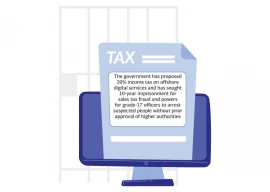
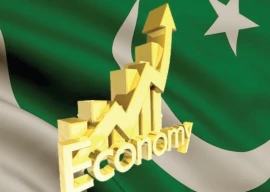

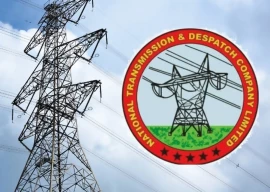


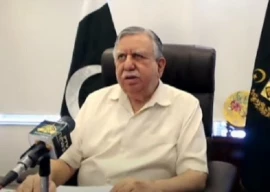


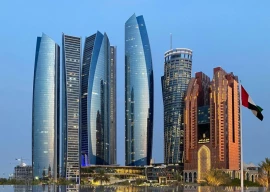











COMMENTS
Comments are moderated and generally will be posted if they are on-topic and not abusive.
For more information, please see our Comments FAQ